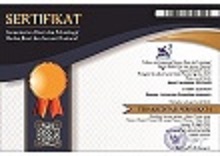PENGARUH KONFIGURASI RUANG TERHADAP KENYAMANAN TERMAL PENGGUNA GEDUNG DI DAERAH BERIKLIM TROPIS LEMBAP
Abstract
Laboratory Building FT Unmul is a building located in humid tropical climate. With humans carrying out various activities, thermal comfort needs to be measured to find out how the building represents a good tropical building. This research was carried out using the Predicted Mean Vote (PMV) model which collaborates on personal variables and spatial variables. Measurements were carried out in several rooms inside the Laboratory Building, using thermal comfort software. The results of this study indicate that without air-conditioning, rooms that are directly exposed to sunlight do not provide thermal comfort while other rooms are able to achieve that. Meanwhile, with artificial ventilation intervention, most of the space does not increase the thermal comfort for the user. These results can be taken into consideration in the design (space configuration) and building management (room management and building energy consumption).
Full Text:
PDFReferences
Amasuomo, T. T., & Amasuomo, J. O. (2016). Perceived thermal discomfort and stress behaviours affecting students’ learning in lecture theatres in Humid Tropics. Buildings, 18(6), 1–17. https://doi.org/10.3390/buildings6020018
Ariestadi, D., Alfianto, I., & Sulton, M. (2014). Kriteria kinerja energi untuk kenyamanan termal pada bangunan fasilitas pendidikan tinggi di Indonesia - analisis dengan metode important performance analysis. Review of Urbanism and Architectural Studies, 12(01), 31–41. https://doi.org/10.21776/ub.ruas.2014.012.01.4
ASHRAE. (2013). Thermal environmental conditions for human occupancy. In ASHRAE Standard 55-2013. ASHRAE.
Atthaillah, A., Saputra, E., & Iqbal, M. (2017). Adaptive comfort pada grand studio program studi arsitektur Fakultas Teknik Universitas Malikussaleh. Nature: National Academic Journal of Architecture, 4(2), 83–91. https://doi.org/10.24252/nature.v4i2a1
CBE. (2022). CBE Thermal Comfort Tool. https://cbe.berkeley.edu/research/cbe-thermal-comfort-tool/
Fanger, P. O. (1970). Thermal Comfort: Analysis and Applications in Environmental Engineering. Technical Press.
Fidela, A., Laina, M., Sari, H., Dosen, M., Dosen, P. I., & Ii, P. (2019). Evaluasi Kenyamanan Termal Ruang Kelas dengan Metode Analisis Predicted Mean Vote ( PMV ) Studi Kasus : Ruang Kuliah Umum 1 Universitas Syiah Kuala. 3(1), 16–19.
Gilani, S. I. U. H., Khan, M. H., & Pao, W. (2015). Thermal Comfort Analysis of PMV Model Prediction in Air Conditioned and Naturally Ventilated Buildings. Energy Procedia, 75, 1373–1379. https://doi.org/10.1016/j.egypro.2015.07.218
Höppe, P. (2002). Different aspects of assessing indoor and outdoor thermal comfort. Energy and Buildings, 34(6), 661–665. https://doi.org/10.1016/S0378-7788(02)00017-8
Karyati, K., Assholihat, N. K., & Syafrudin, M. (2020). Iklim mikro tiga penggunaan lahan berbeda di Kota Samarinda Provinsi Kalimantan Timur. Agrifor, XIX(1), 11–22. https://doi.org/10.31293/af.v19i1.4576
Kim, J. T., Lim, J. H., Cho, S. H., & Yun, G. Y. (2015). Development of the adaptive PMV model for improving prediction performances. Energy and Buildings, 98, 100–105. https://doi.org/10.1016/j.enbuild.2014.08.051
Mishra, A., & Ramgopal., M. (2014). A comparison of student performance between conditioned and naturally ventilated classrooms. Building and Environment, 84, 181–188.
Nicol, J. F., & Humphreys, M. A. (2002). Adaptive thermal comfort and sustainable thermal standards for buildings. Energy and Buildings, 34, 563–572.
Sugini. (2004). Pemaknaan istilah- istilah kualitas kenyamanan thermal ruang dalam kaitan dengan variabel iklim ruang. Logika, 1(2), 3–17. https://doi.org/10.20885/logika.vol1.iss2.art1
Tartarini, F., Schiavon, S., Cheung, T., & Hoyt, T. (2020). CBE thermal comfort tool: online tool for thermal comfort calculations and visualizations. SoftwareX, 12, 100563. https://doi.org/10.1016/j.softx.2020.100563
DOI: https://doi.org/10.17509/jaz.v6i1.48680
Refbacks
- There are currently no refbacks.
Copyright (c) 2023 Pandu K. Utomo, Dharwati P. Sari

This work is licensed under a Creative Commons Attribution-ShareAlike 4.0 International License.





